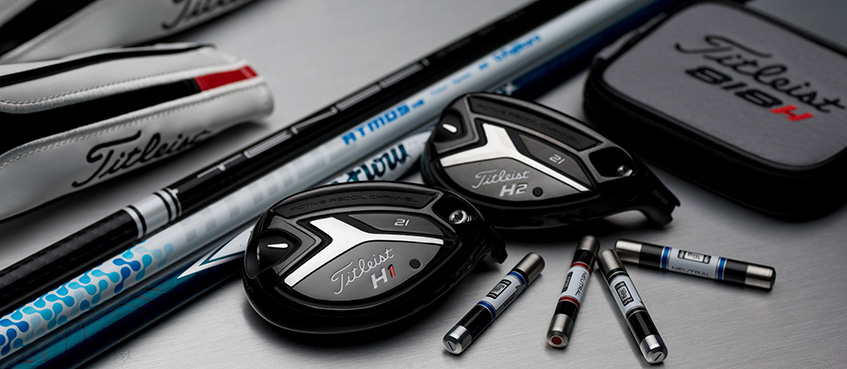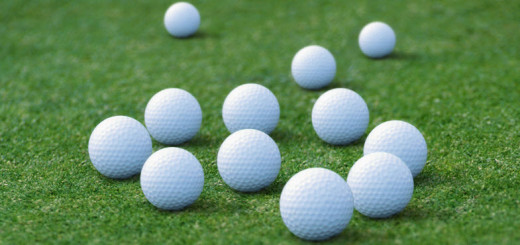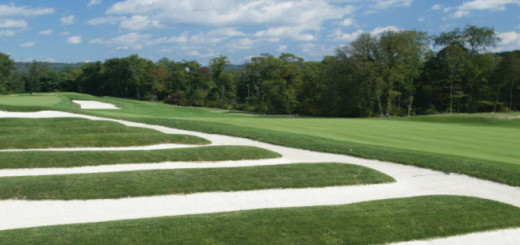The Importance of Golf Alignment
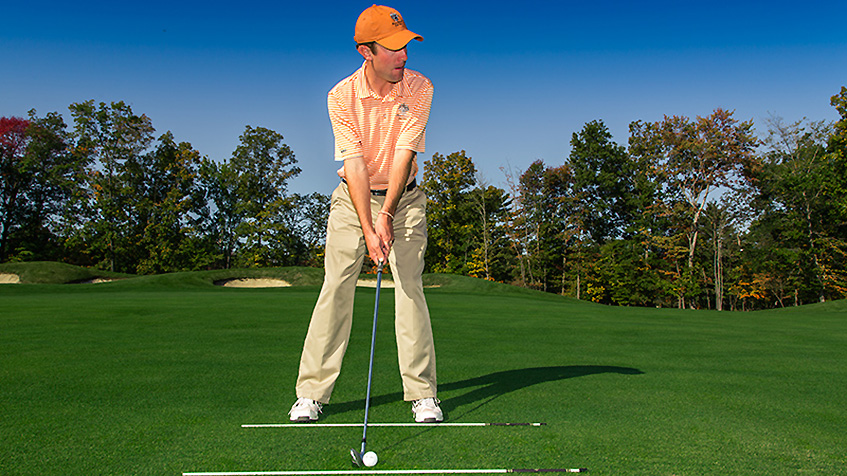
Alignment Rods, image: hvmag.com
The perfect swing, with the ideal golf club applied at the perfect speed, will not matter one bit if you are lined up at the center of the water hazard. All the hard work, dedication, and money you put into your golf game can go to waste every time you are not aligned correctly to hit the golf ball.
If you talk to professional golfers and teaching professionals, they will tell you that proper alignment is crucial to your success on the golf course.
So, if the alignment is so important, why don’t people pay more attention to it? The answer to this is quite simple. Alignment is difficult. It takes time, skill, and practice to figure out alignment. In this guide, we will give you some tips to help your alignment, some insider information from professionals, and some realistic expectations to put on yourself.
The Correct Golf Alignment
Now that you understand the importance of golf alignment and why it probably warrants a bit more time on your part to master it, we will give you some general guidelines to help you make sure you are correctly aligned every time.
- Ball Placement
- Depending on which golf club you have in your hand, the ball placement will change slightly. With your Driver and hybrid and long irons, the ball will be more towards the front of your golf stance. As you move towards the wedges, the ball gets to be in the middle or slightly behind the center.
- Feet Position
- Your feet should be positioned facing directly forward with your left toe angled out slightly. If you turn your feet too far to the left, you will leave yourself open to the target and potentially miss the ball to the right. If you set your feet too far to the right, you will leave yourself closed to the target and struggle to clear your body out of the shot.
- Learn to make sure that your feet are parallel to your target line as well. If your feet are not parallel to your target line, your alignment will suffer greatly.
- Legs Width Apart
- Your legs should be shoulder-width apart. As you move closer to your wedges, your feet can be slightly narrower. Some players choose to be a little wider than shoulder-width when hitting a driver, but this is something you will have to test in your game.
- If you start feeling like your weight cannot transfer forward because your stance is too wide, then you must narrow it a bit.
- Hips / Posture
- As far as your hips are concerned, you will need to make sure that your hips are parallel to your feet and your shoulders. If your hips are twisted to the left or the right of the target, it can throw off your alignment and other angles in your swing.
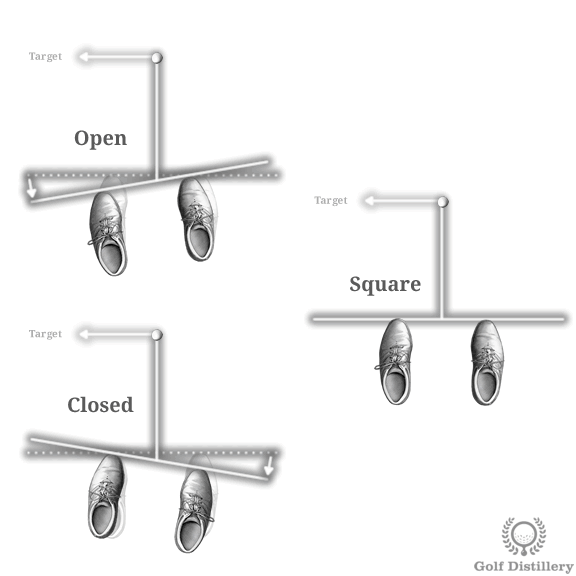
How to Tweak Your Stance for Proper Golf Alignment, image: golfdistillery.com
Proper Alignment by Club
Now that you have a basic understanding of the correct golf alignment, it is essential to understand how that will affect each club in your bag. Alignment with a driver can be different from alignment with a putter. We have some tips that are unique to each club in your bag.
Remember that it is always important to develop and implement a pre-shot routine that keeps you consistent with each of your clubs.
- Ball Placement
- Depending on which golf club you have in your hand, the ball placement will change slightly. With your Driver and hybrid and long irons, the ball will be more towards the front of your stance. As you move towards the wedges, the ball gets to be in the middle or slightly behind the center.
- Tips Unique to Drivers
- Depending on what type of a Driver you have, the face can be slightly open, square, or somewhat closed. You must be aware of this when setting up and make sure you let the club sit at address exactly how it is designed.
- Depending on what type of a Driver you have, the face can be slightly open, square, or somewhat closed. You must be aware of this when setting up and make sure you let the club sit at address exactly how it is designed.
- If you have a closed clubface (used to help you turn over and draw the ball), make sure to set it down square at impact.
- Never step into the Driver from the side. Always stand behind the tee shot before you set up to hit the golf ball. Give yourself a good view of the entire area.
- The most common mistake that people make with the Driver is that they tend to overcompensate their alignment to make up for swing flaws. If you slice the ball, do not aim down the left side to compensate for the slice. This could make your slice worse. You must work on practicing your slice, learning how to release the ball, and then setting up for the center of the fairway.
- Tips Unique to Irons
- The irons are going to be your most crucial club when it comes to approaching the pin. When lining up with your irons, you want to take into consideration all the trouble around the green and choose your alignment correctly.
- Sometimes it does not make sense to go after the pin. Sometimes you need to line yourself up with the center of the green, where there is the least amount of trouble.
- Choose the line that makes the most sense for your game and your capabilities. When you do decide on this line, make sure you trust it fully. Do not set up and then start to inch your shoulders and your feet. Choose your route, set up square, and trust your swing.
- Those small adjustments that you make right before you swing could end up pushing you five or seven yards away from the pin. One of the most critical parts of the alignment game is learning to trust what your alignment is and not continually compensate for your swing.
- Tips Unique to Wedges
- When hitting shots with a wedge, your clubface will often be open. You must practice how to hit balls with an open clubface that still are lined up to your target. People often think that because the clubface is open, they are heading to the right of the target. If the center of your clubface is aimed at the pin, your ball will go high, but the golf ball should go straight as well.
- Alignment with wedges takes practice because of the way golfers need to manipulate the clubface in the wedge swing. Luckily, practicing wedge shots is something you can even do indoors with a few foam golf balls and a mat.
- Tips Unique to Putters
- Having a consistent alignment routine for your putter is just as important as it is with other golf clubs. Putters have the advantage of having very distinct and useful alignment lines on the top of the club.
- If you struggle with your alignment in putting, look for a putter that is a mallet or non-traditional shape with an extensive alignment line. This line will help you visualize how to swing on the proper path and the line that the ball will need to roll on to get to the target.
- With your putting stroke, make sure you set up square to your target (which is not always the hole) and then trust that line.
Tips for Practicing at Home or on the Range
Now that you understand why alignment is so important and how to align yourself properly, it can help to know how to practice this in your own home. Luckily, alignment is a straightforward thing to practice even when you are not on the golf course!
-
- Tip #1 – Use of Alignment Sticks
- Alignment sticks have genuinely changed the game of golf. It is rare to find a serious player who does not have an alignment stick in their golf bag. Alignment sticks are the ultimate golf training aid and purchasing a few of these can transform your game.
- When you use an alignment stick, you should first use it to check your alignment with your feet. Setup to your target, and when you think you are ideally aimed to go ahead and put an alignment stick down at the tips of your toes.
- When you step back, you should see that alignment stick heading parallel to your target. If you have more than one alignment, stick you can set one up that lines directly to your target and one that is parallel. The one that lines up directly with the target is where you will place your clubhead.
- When you step into a shot, you should start to understand and see the relationship between clubface angle and the way your feet are aligned. Many people just need to see this to have it click and help them start lowering their scores.
- Tip #1 – Use of Alignment Sticks
- Tip #2 – Use of Mirrors
- As we mentioned with alignment sticks, sometimes properly aligning yourself is a matter of seeing what it is that you are doing. Without the use of a mirror or video technology, you may have no idea that your body is entirely open to the target.
- Leaving your body open to the target is not only going to affect your alignment and aim, but it will also have an impact on your golf swing and, over time, could lead to some severe swing flaws. Make sure that all your practice is an intentional practice. Choose a target, line up, and try and strike your target. If you can do this with a mirror or a friend with a video, you will start to see the things in your game that need the most work.
- Tip #3- Practice the Entrance
- Most low handicap golfers will tell you that it is nearly impossible to stand over a ball and know if you are correctly aligned to the target. If you watch golf on television, try to spend one afternoon watching how the golfers align themselves to hit a shot
- They will stand behind the golf ball, pick a line that they want to hit their shot on, then they approach from the side and set their clubhead in place. Once the clubhead is set in place, then the feet, shoulders, and hips are aligned. The golfer then may take one last look at the target (or they may not), and from there, they swing.
- Golfers are very deliberate about the entrance they make to the golf ball. Without the proper entry, the alignment will be off considerably. To implement this same strategy on the golf course, you will need to practice it on the range. Just because you hit a basket of 75 range balls does not mean that you got better at golf. Treat each one like it matters like it is a real shot on the golf course. When you miss three times left of your target, make sure it is not a simple alignment adjustment.
- Tip #4- Pick A Close Spot
- There is no question that it is difficult to align yourself properly to a target that is over one hundred yards away. Trying to make sure that your shoulder, hips, and feet are pointed directly at a small cup in the ground that is almost further than you can see, seems virtually impossible.
- There is a trick that many professionals and amateurs use to help make this process easier. When you stand behind your golf ball, try to find a spot on the line between your ball and the target that is on the same line. Choose a leaf or a lighter blade of grass that is only six or twelve inches in front of your ball but still on the same line as your target. When you step in and align yourself, forget about the pin. Line yourself up to the small target that is directly in front of you.
- Choosing the close target makes the entire aiming process seem that much more feasible.
Conclusion
Amateur golfers do not spend enough time practicing or working on alignment. As you get better, you realize how much difference a one or two-yard alignment mistake can mean. If you miss the green by a yard and it rolls down the bank into the water, it is going to cost you a few strokes. Maybe the only reason that happened was a slight alignment adjustment you made right at the last second.
Practice your alignment on and off the course. Make sure that you have the proper tools to help you improve your alignment. You cannot expect that this is a project you can master overnight but having a general idea of the importance of alignment in your golf game is the first step.
Golfballs.com has taken this concept directly to the golf ball with its exclusive new alignment aid printed half-way around the golf ball. The Tour-Proven AlignXL™ feature is available on all the top brands with no set-up charges and no minimum order.

